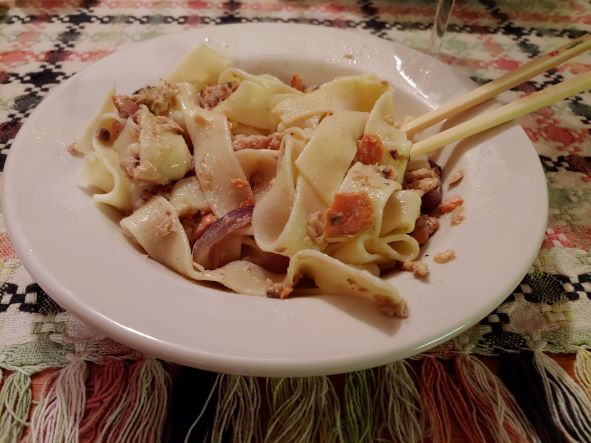One if my favorite recipes is breaded fish fillets. It’s an easy dish to make, and delicious. Another go-to recipe is fish fillets baked in yogurt (or a combination of yogurt and parmesan cheese). So I considered, why not combine breaded fish with yogurt? In this case, the yogurt is mixed with turmeric. This renders a nice sauce in which to cook the fillets. You’ll be amazed at the result. It is really good. This is a multi-dimensional dish that can be served by itself with some crusty bread, or with rice or pasta. Add a light red wine or good white wine, or even beer, and you have a winner.
For this dish you can use any good firm fleshed fillet, be it cod, turbot, halibut, flounder, monkfish, etc. I would not recommend dover sole. It is just too mild and fragile for this recipe.
BREADED FISH FILLETS WITH YOGURT
Ingredients:
4 fish fillets, 6 ounces each
1 egg, lightly beaten
¾ to 1 cup seasoned bread crumbs
1 tablespoon turmeric
1 cup yogurt
Instructions:
- Preheat oven to 375 degrees F.
- Rinse fish fillets under cold running water and pat dry with paper towels.
- Place beaten egg in one dish, and breadcrumbs in another.
- Mix turmeric with the yogurt. The turmeric will give the yogurt a pinkish color. Set aside.
- First, dip fillets in egg, and then in breadcrumbs to coat thoroughly. Place fillets in a greased baking dish. Cover with turmeric-yogurt mix, and bake until tender, about 25 minutes.
Yield: 4 servings.

















